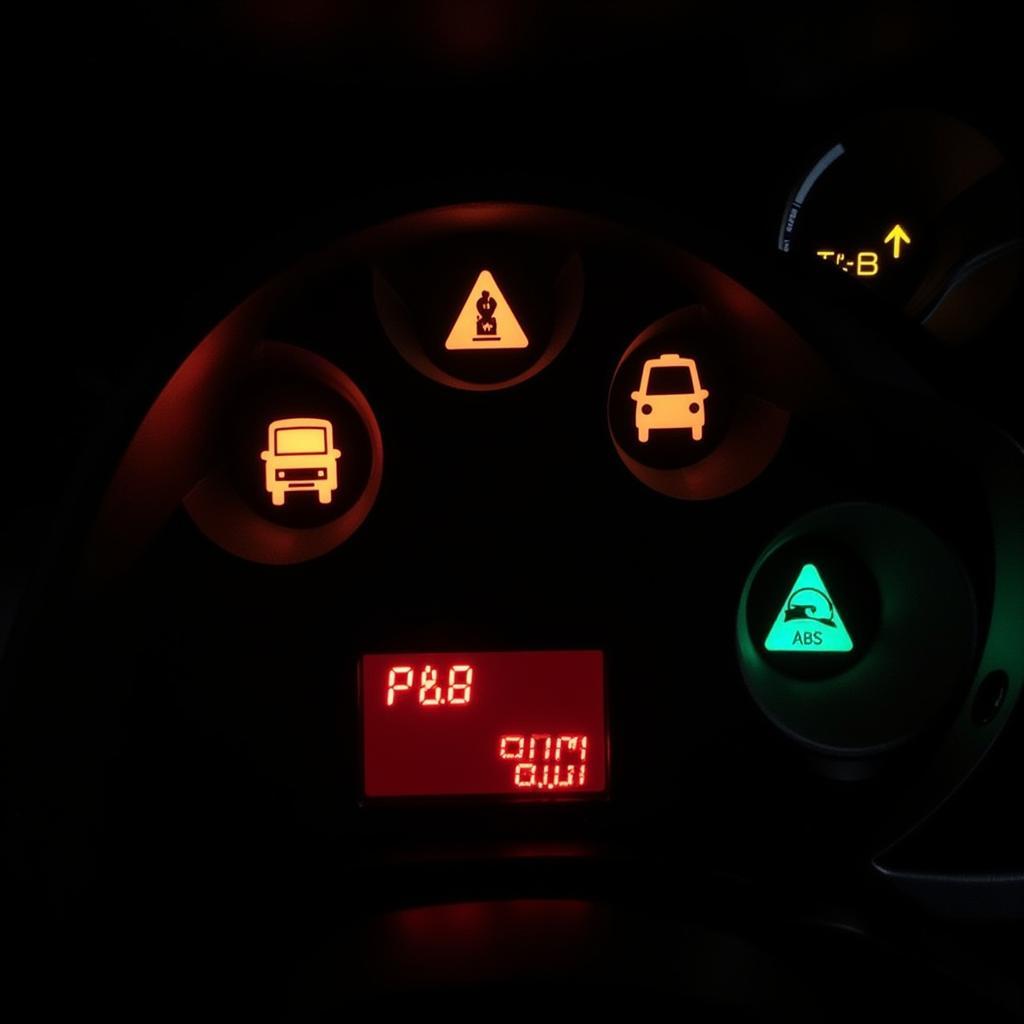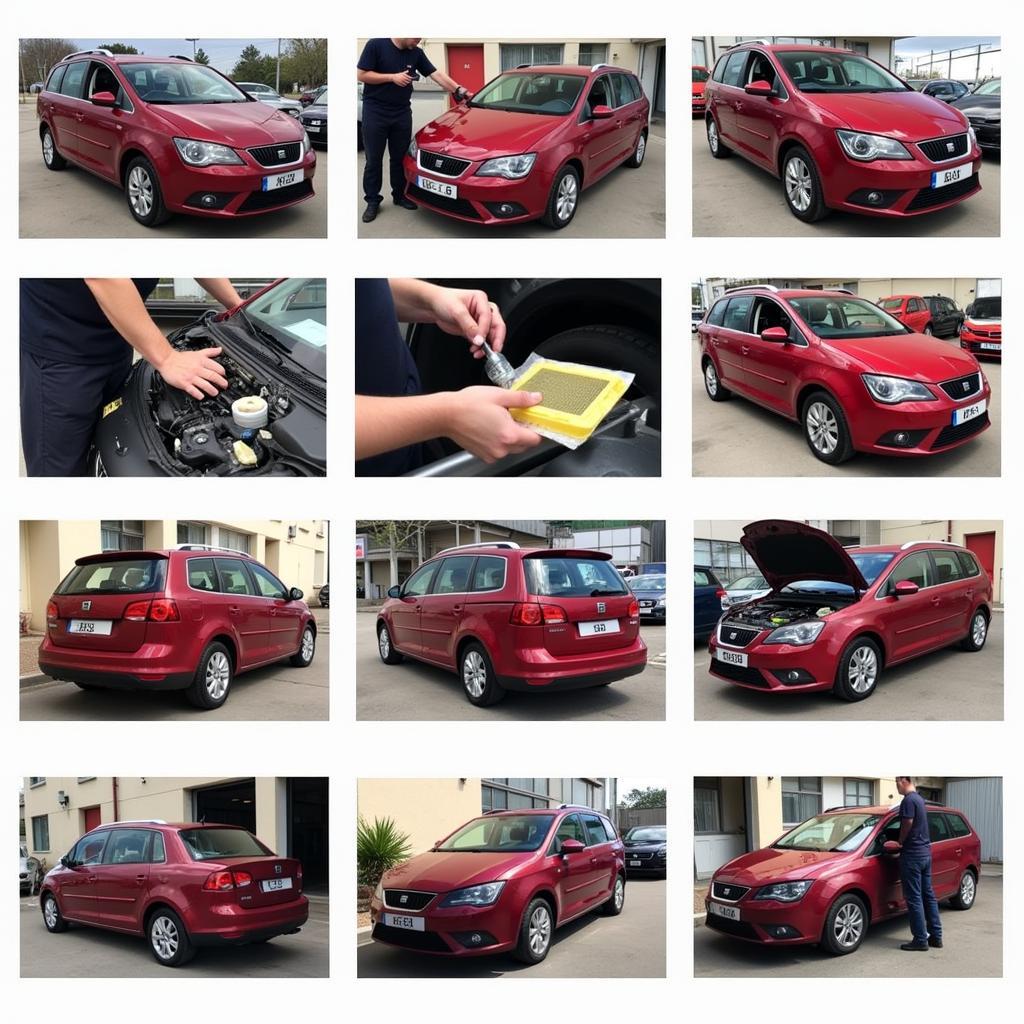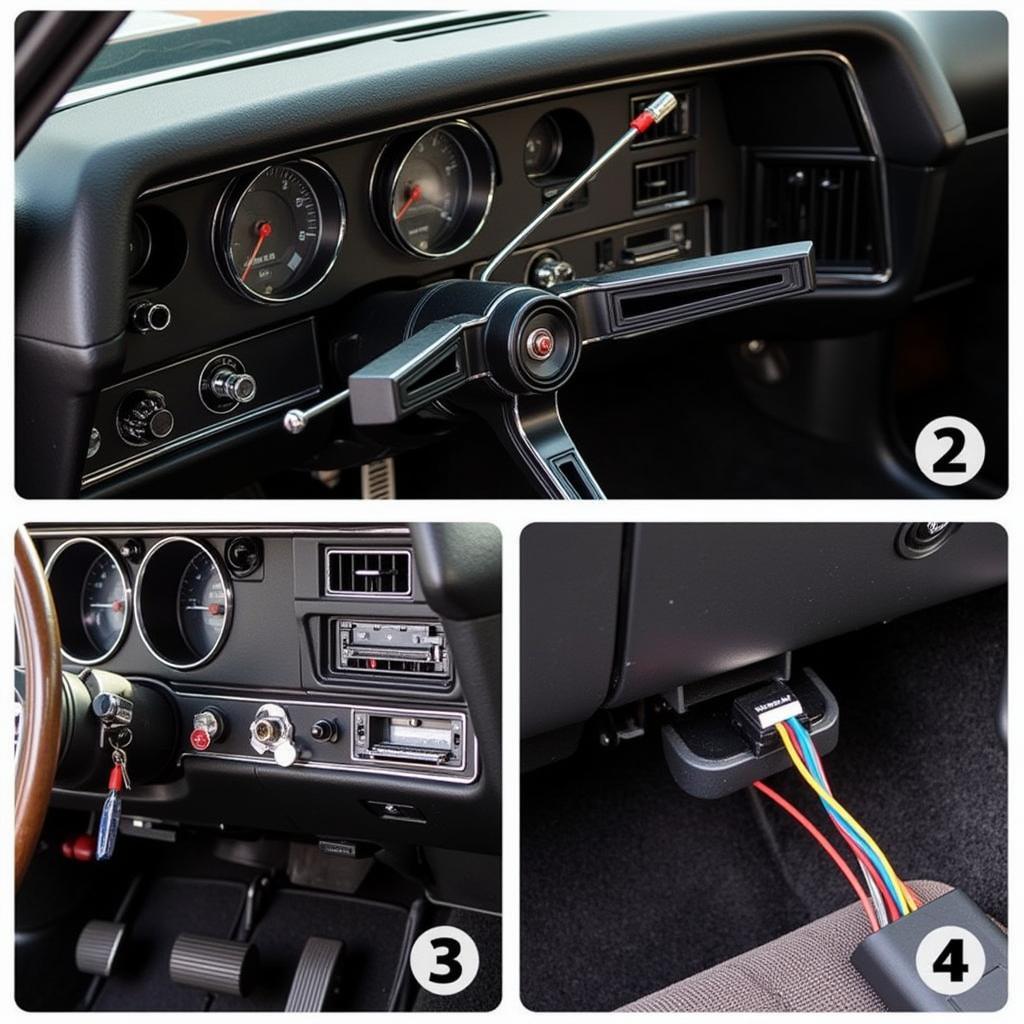The Seat Alhambra is a popular choice for families due to its spacious interior and practicality. However, like any other vehicle, it’s not immune to the occasional warning light popping up on your dashboard. While some warning lights are simply reminders for routine maintenance, others can indicate a more serious problem that requires immediate attention.
This comprehensive guide will delve into the various warning lights you might encounter in your Seat Alhambra, explaining their meaning and outlining the appropriate course of action.
Understanding Your Seat Alhambra Dashboard Warning Lights
Your Seat Alhambra’s dashboard is equipped with an array of warning lights, each designed to alert you to a specific system status or potential issue. These lights vary in color, indicating the urgency level of the situation.
- Red Warning Lights: These signify a serious problem that requires immediate attention. Continuing to drive could potentially cause further damage to your vehicle or put you and your passengers at risk.
- Orange/Amber Warning Lights: These indicate a moderate issue that requires attention soon. While you may be able to continue driving for a short period, it’s crucial to have the problem diagnosed and addressed as soon as possible.
- Green/Blue Warning Lights: These lights generally indicate that a system is active and functioning correctly, such as your headlights or turn signals.
Common Seat Alhambra Warning Lights and What They Mean
 Seat Alhambra Warning Lights Dashboard
Seat Alhambra Warning Lights Dashboard
Let’s explore some of the most common Seat Alhambra warning lights and understand what they mean:
Engine Warning Light
seat alhambra dashboard warning lights
The engine warning light, often depicted as an engine outline or the word “Check Engine,” is one of the most common warning lights you may encounter. It can illuminate for various reasons, ranging from minor issues like a loose gas cap to more serious problems like a faulty oxygen sensor or catalytic converter.
What to do: If the engine warning light comes on and stays illuminated, it’s crucial to have your vehicle diagnosed by a qualified mechanic as soon as possible. Ignoring this warning light could lead to costly repairs down the line.
ABS Warning Light
seat alhambra abs warning light
The ABS (Anti-lock Braking System) warning light, typically displayed as the letters “ABS” surrounded by a circle, indicates a problem with your vehicle’s anti-lock braking system. This system is crucial for maintaining steering control and preventing wheel lock-up during hard braking.
What to do: If the ABS warning light illuminates, it’s crucial to avoid hard braking and have your vehicle inspected by a qualified mechanic at your earliest convenience.
Airbag Warning Light
seat alhambra airbag warning light
The airbag warning light, often displayed as a seated figure with a deployed airbag in front of them, signifies an issue with your Seat Alhambra’s airbag system. This system is critical for protecting you and your passengers in the event of a collision.
What to do: If the airbag warning light is on, it’s essential to have your vehicle inspected by a qualified mechanic immediately. A malfunctioning airbag system can have serious consequences in a collision.
Battery Warning Light
The battery warning light, typically depicted as a battery symbol, indicates a problem with your vehicle’s charging system. This could be due to a failing battery, a faulty alternator, or a loose connection.
What to do: If the battery warning light illuminates, it’s essential to check the battery terminals for any loose connections. If the connections are secure, you should have your vehicle’s charging system inspected by a qualified mechanic.
Tire Pressure Monitoring System (TPMS) Warning Light
The TPMS warning light, often displayed as an exclamation mark within a tire-shaped outline, signals low tire pressure in one or more of your tires.
What to do: If the TPMS warning light comes on, it’s crucial to check your tire pressure and inflate them to the recommended PSI, which can typically be found on a sticker inside your driver’s side doorjamb.
Utilizing Remote Diagnostics for Seat Alhambra Warning Lights
 Seat Alhambra Remote Diagnostics
Seat Alhambra Remote Diagnostics
In today’s digitally driven world, remote diagnostics and programming have emerged as invaluable tools for addressing car issues, including those indicated by warning lights in your Seat Alhambra. Let’s explore how these technological advancements can simplify the process:
How Remote Diagnostics Work
Specialized software can interface with your Seat Alhambra’s onboard computer system, even from a remote location. This allows technicians to retrieve diagnostic trouble codes (DTCs) stored in your vehicle’s computer, providing valuable insights into the nature and severity of the problem.
Benefits of Remote Diagnostics and Programming
- Convenience: Remote diagnostics eliminate the need to physically take your car to a workshop for initial diagnosis.
- Speed: Technicians can quickly access your vehicle’s data and provide a preliminary diagnosis, often within a shorter timeframe than traditional methods.
- Cost-effectiveness: By identifying the root cause of the problem remotely, unnecessary repairs and expenses can be avoided.
- Software Updates: In some instances, resolving the issue may involve updating your Seat Alhambra’s software. Remote programming enables technicians to install these updates wirelessly, saving you time and effort.
Finding a Reliable Remote Diagnostics Service
When choosing a remote diagnostics service for your Seat Alhambra, ensure they have:
- Experienced Technicians: Skilled technicians familiar with Seat vehicles can accurately interpret diagnostic data.
- Advanced Software: Utilizing up-to-date and compatible software is crucial for effective diagnosis and programming.
- Positive Customer Reviews: Reading reviews from other Seat owners can provide valuable insights into the service quality.
Preventive Measures: Keeping Your Seat Alhambra in Top Condition
 Seat Alhambra Regular Maintenance
Seat Alhambra Regular Maintenance
While addressing warning lights promptly is essential, adopting preventive maintenance practices can help prevent many issues from arising in the first place. Here’s how to keep your Seat Alhambra running smoothly:
- Adhere to the Scheduled Maintenance: Your Seat Alhambra’s owner’s manual outlines a recommended maintenance schedule. Following this schedule can help ensure all systems function optimally and potential problems are detected early on.
- Regularly Check Fluid Levels: Regularly check and top up essential fluids like engine oil, coolant, brake fluid, and windshield washer fluid.
- Inspect Tire Pressure and Condition: Maintaining proper tire pressure not only ensures a comfortable ride but also contributes to fuel efficiency and tire longevity.
- Pay Attention to Unusual Noises or Smells: Any unusual sounds or smells emanating from your vehicle could indicate a developing problem.
Conclusion
Understanding the meaning of your Seat Alhambra’s warning lights and taking appropriate action is crucial for ensuring your vehicle’s longevity and your safety on the road. By staying proactive with maintenance and utilizing the benefits of modern technologies like remote diagnostics, you can keep your Seat Alhambra running smoothly for miles to come.
Remember, if you encounter any warning lights that leave you unsure, it’s always best to err on the side of caution and consult a qualified mechanic.

